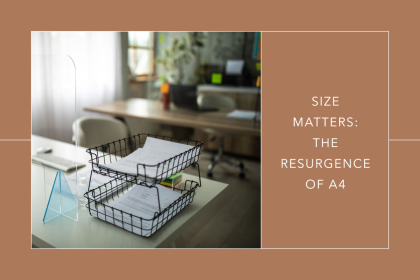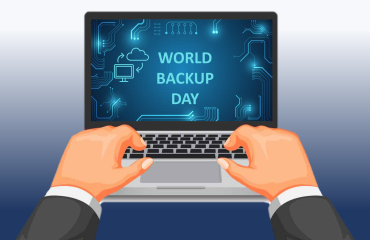
In the realm of office printing, the battle between A4 and A3 paper formats has been ongoing for decades. However, over the course of the past few years, there has been a notable surge in the adoption of A3 printing solutions. Larger paper sizes offered benefits such as improved document presentation and increased productivity, leading many businesses to invest in A3-capable printers and multifunction devices. However, recent trends suggest a shift back towards the more traditional A4 format in managed print services.
Managed print services (MPS) have played a crucial role in this evolution. MPS providers offer comprehensive solutions to optimize printing infrastructure, reduce costs, and enhance document workflows for businesses of all sizes. For years, A3 devices dominated these solutions, catering to the demand for larger print formats in various industries such as architecture, engineering, and graphic design.
So why the resurgence of A4 in managed print services?
- Cost Efficiency: One of the primary drivers behind A3 vs A4 is cost efficiency. A3 devices typically come with higher upfront costs, larger footprint, and increased maintenance expenses compared to their A4 counterparts. But the cost per page printed is lower for large page volumes. With A4 technology evolving and digitization plus automation on the rise, the breakeven page volume point between A3 and A4 has dropped and this “new affordability” of A4 devices and their associated consumables becomes a compelling factor for businesses constantly seeking ways to streamline expenses.
- Flexibility and Adaptability: A4 printers and multifunction devices offer greater flexibility and adaptability to the diverse needs of modern workplaces. While A3 printing may be necessary for specific tasks, such as creating architectural blueprints or marketing materials, the majority of everyday office documents are designed for A4 format. By standardizing on A4 devices within their managed print environment, businesses can simplify workflows, reduce complexity, and enhance compatibility across departments.
- Technological Advancements: Advances in printing technology have contributed to the improved quality and versatility of A4 devices. Modern A4 printers now offer features and functionalities that were once exclusive to A3 machines, such as high-resolution printing, duplex printing, and advanced finishing options. This convergence of capabilities has blurred the line between A4 and A3, making A4 devices more appealing for a wider range of applications.
- Environmental Considerations: As sustainability becomes a growing concern for businesses worldwide, the environmental impact of printing practices comes under scrutiny. A4 printing is inherently more resource-efficient, requiring less paper and energy consumption compared to A3 printing. By transitioning back to A4 within their managed print services, organizations can reduce their carbon footprint and contribute to their sustainability goals.
- Remote and Hybrid Work Trends: The shift towards remote and hybrid work models, accelerated by global events such as the COVID-19 pandemic, has reshaped the way businesses approach printing. With employees working from home or distributed locations, there is less reliance on centralized A3 printing facilities. A4 printers, being more compact and suitable for individual workspaces, align better with the evolving needs of remote and hybrid work environments.
In conclusion, the resurgence of A4 within managed print services marks a significant shift in printing preferences driven by cost considerations, technological advancements, environmental awareness, and evolving workplace dynamics. While A3 printing remains essential for certain specialized tasks, the versatility, affordability, and efficiency of evolving A4 devices make them the preferred choice for many businesses seeking to optimize their print infrastructure in today’s rapidly changing landscape. As MPS providers continue to adapt to these trends, they play a pivotal role in helping organizations navigate the transition towards a more A4-centric printing environment.


